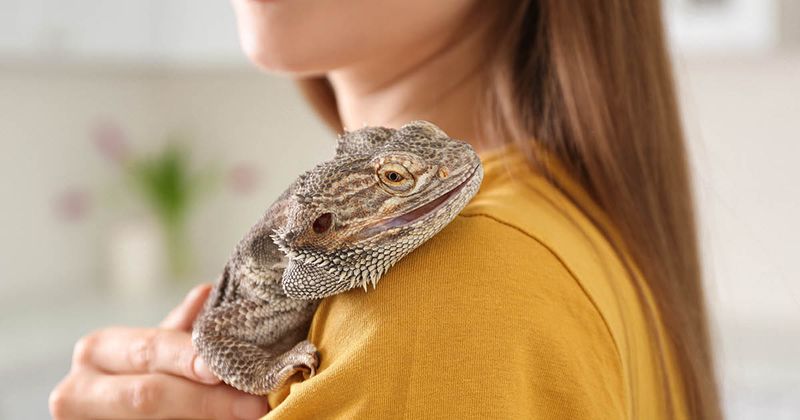Investigation links Salmonella outbreak to pet bearded dragons
Key takeaways:
- Two cases of Salmonella infection in Canada and 12 in the U.S. were linked to bearded dragons.
- Most cases occurred in children, who are more susceptible to infection and illness.
An investigation into a Salmonella outbreak in Canada linked to pet bearded dragons revealed a multinational outbreak that included a dozen cases in the United States in 2021 and 2022, researchers reported.
Keeping reptiles as household pets has become more common in the U.S. and Canada, but many people are unaware that reptiles such as lizards, snakes and turtles can carry Salmonella in their gastrointestinal tracts without displaying signs of illness while also shedding the bacterium, according to Katherine Paphitis, PhD, MSc, CPHI(c), CIC, an enteric zoonotic specialist at Public Health Ontario, and colleagues.

“The finding that bearded dragons were the source of this outbreak was deemed worthy of scientific publication to contribute to the body of literature on salmonellosis and source attribution, and to provide a resource for individuals involved in human case investigation and outbreak management who may encounter this serotype,” Paphitis told Healio about the new study.
In addition to reptiles, hedgehogs and backyard poultry can also carry Salmonella and other pathogens that can infect humans. In 2021, Salmonella outbreaks prompted the CDC to warn against snuggling or kissing pet chickens.
“Since the Salmonella serotype implicated in this investigation is rare in North America,” Paphitis said, “little was known regarding potentially causative exposures.”
After two cases of Salmonella enterica serovar Vitkin infection were detected in Ontario in 2022 in infants who lived in households with bearded dragons, Paphitis and colleagues analyzed data from Pulsnet Canada and Pulsenet USA to find similar Salmonella cases.
They found no cases in Canada over the previous 14 years but identified 12 in the U.S. linked to the same Salmonella strain between March 2021 and September 2022. Of the 12 U.S. cases in 10 states, eight involved a person who either had direct contact with a bearded dragon or had one in their household.
Among the U.S. cases, eight occurred among children aged younger than 1 year and five people were hospitalized. There were no reported deaths.
Salmonella was detected in the specimens from the two Canadian cases collected from the bearded dragons’ rock cave and from fecal specimens, whereas no U.S. patients allowed investigators to screen their bearded dragons for Salmonella.
No single breeder was linked to all the bearded dragons. The Ontario patients obtained their dragons from two different pet stores and the U.S. patients obtained their bearded dragons from four different physical pet stores and an online supplier, although the U.S. pet stores were supplied by one of three common intermediary suppliers.
According to the Paphitis and colleagues, captive bearded dragons have higher rates of Salmonella carriage than wild bearded dragons, and stress can increase their Salmonella shedding rate, requiring owners to be aware of the risk, reduce stress on the dragons and practice proper hygiene when handling them.
“Education of pet owners is important so that they can make an informed choice regarding the type of pet they choose to bring into their household,” Paphitis said. “Awareness of the risk of Salmonella associated with reptiles, for example, can help pet owners to be aware of general steps they can take at home to minimize the risk of illness for both themselves and other household members, including children.”

